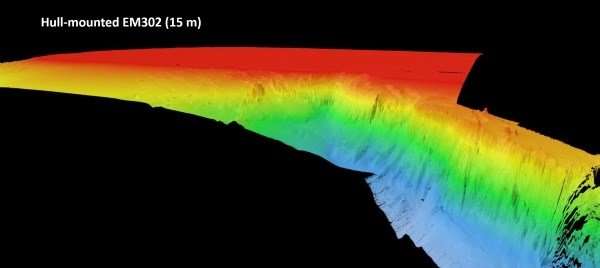An Underwater Irish Canyon Is Sucking CO2 Out of the Atmosphere

A research expedition to a huge underwater canyon off the Irish coast has shed light on a hidden process that sucks the greenhouse gas carbon dioxide (CO2) out of the atmosphere.
Researchers led by a team from the University College Cork (UCC) took an underwater research drone by boat out to Porcupine Bank Canyon — a massive, cliff-walled underwater trench where Ireland's continental shelf ends — to build a detailed map of its boundaries and interior. Along the way, the researchers reported in a statement, they noted a process at the edge of the canyon that pulls CO2 from the atmosphere and buries it deep under the sea.
All around the rim of the canyon live cold-water corals, which thrive on dead plankton raining down from the ocean surface. Those tiny, surface-dwelling plankton build their bodies out of carbon extracted from CO2 in the air. Then, when they die, the coral on the seafloor consume them and build their bodies out of the same carbon. Over time, as the coral die and the cliff faces shift and crumble, which sends the coral falling deep into the canyon. There, the carbon pretty much stays put for long periods. [In Photos: ROV Explores Deep-Sea Marianas Trench]
There's evidence that a lot of carbon is moving this way; the researchers said they found "significant" dead coral buildup at the canyon bottom.
This process doesn't move nearly enough carbon dioxide to prevent climate change, the researchers said. But it does shed light on yet another mechanism that keeps the planet's CO2 levels regulated when human industry doesn't interfere.
"Increasing CO2 concentrations in our atmosphere are causing our extreme weather," Andy Wheeler, a UCC geoscientist and one of the researchers on the expedition, said in the statement. "Oceans absorb this CO2 and canyons are a rapid route for pumping it into the deep ocean where it is safely stored away."
The mapping expedition covered an area about the size of Chicago and revealed places where the canyon has moved and shifted significantly in the past.
Sign up for the Live Science daily newsletter now
Get the world’s most fascinating discoveries delivered straight to your inbox.
"We took cores with the ROV, and the sediments reveal that although the canyon is quiet now, periodically it is a violent place where the seabed gets ripped up and eroded," Wheeler said.
The expedition will return to shore today (Aug. 10).
Originally published on Live Science.










